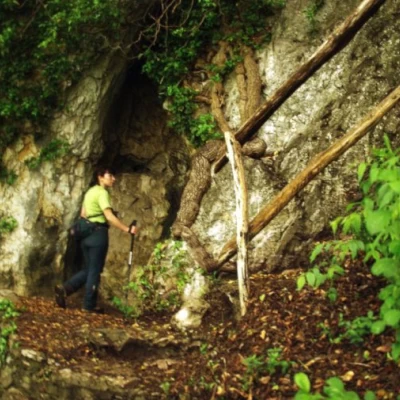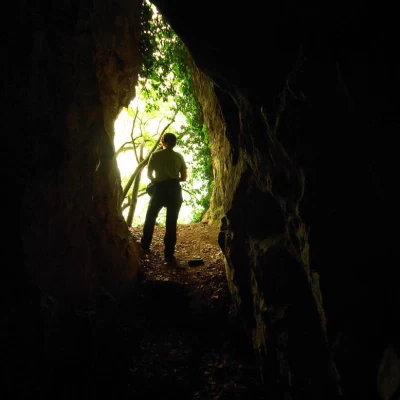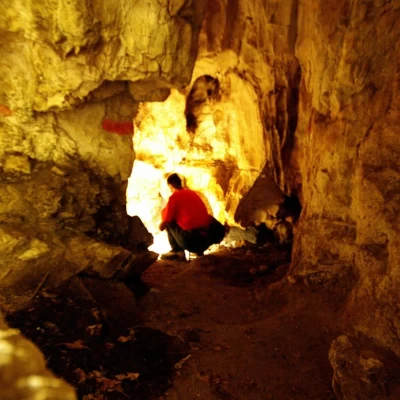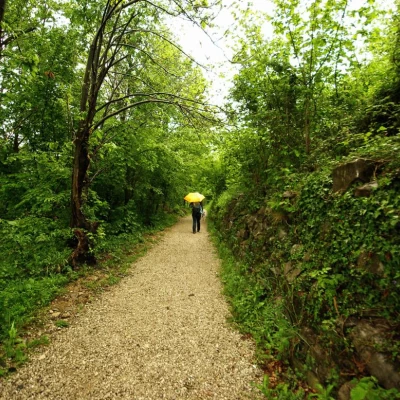Sand Hole
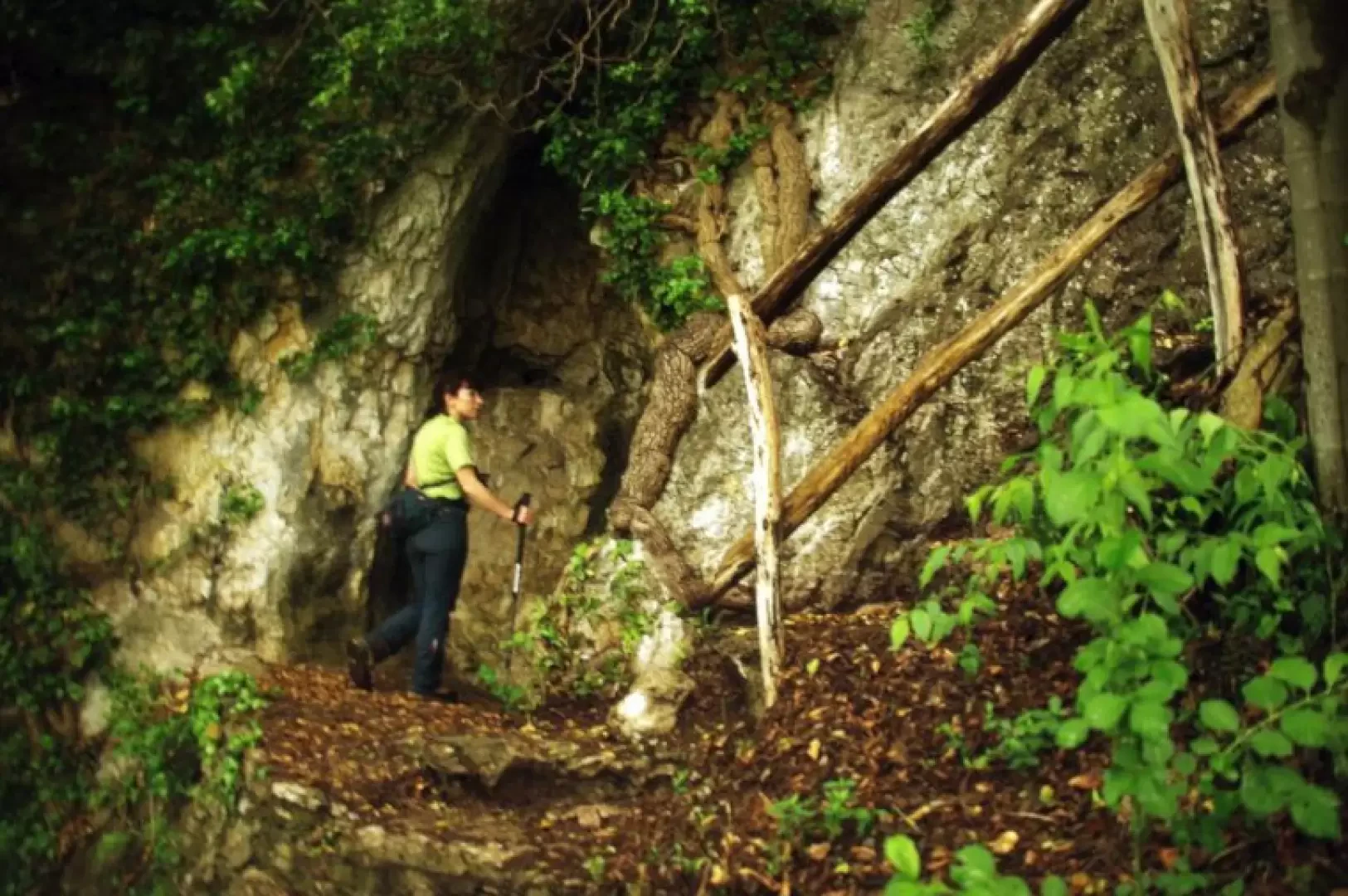
Introduction
An excursion of short duration but of great geological and palaeontological interest, not very well known and rather neglected in terms of route maintenance (no signposts in paint and signs only at the main forks). The destination is a small cave that has always been known locally, but which was studied in depth between 1956 and 1964; it is a karstic cavity of about 15 metres divided into three rooms joined by tunnel passages. The removal of successive layers of sandy sedimentation has revealed the presence of bones of wild animals (deer, roe deer, wild cats, birds, turtles - all likely remains of meals), stone tools, pottery and copper, and - in the last chamber - human bones dating back to the time of a local Aeneolithic civilisation. Along the way we also encounter a fossiliferous rock face (mainly algae) and a limestone ore quarry (calcium carbonate and crystalline magnesium) with the remains of technical equipment, all abandoned in the late 1980s. The return journey is along a cart track tracing a Roman path traced at high altitude to avoid the marshes of Lake Annone below.
.Description
From the 275m car park, following the scanty signposts, we go to the base of the mountain (Monte Cornizzolo) along a road parallel to the slope; at a small valley with a stream, our path branches off to the left. With a steady ascent through the coppice wood, we reach the large rock of Sasso Bicicola, a red limestone rich in fossils; we continue to an unmarked junction, where we climb up wooden steps to the left to reach the excavated terrace of the Borima Quarry: nearby we can see, now engulfed by vegetation, the remains of the service buildings and a hopper for the coarse grinding of ore. The path turns into what remains of the cart track accessing the quarry and is followed downhill to the first hairpin bend, where the footpath begins again. Near a large erratic boulder you will notice a fork in the road: after visiting a "casota" (an old rural construction with a dry stone dome, used as a temporary shelter for people and tools) on the left, continue to the right along the bushy wood until you climb up gravel to the base of a compact rock wall (Palestra di Civate). Taking a ledge equipped with a safety chain, climb up the right-hand edge of the cliff until you come to a small, earthy pulpit, where the wide crack of the Buco della Sabbia (Sand Hole) is evident, about 450 m. After the visit, climb a flight of steps that leads to a stony path on the Civate-Cornizzolo route. With panoramic views of Lakes Annone and Oggiono, descend to the right until reaching a cart track between the agricultural terraces of Pozzo di Civate. Follow the track ("Roman road") to the right, alternately crossing wooded areas and wide meadow clearings on partly abandoned terraces. Past the ruins of the Cascina Baroncello (a typical rural building of the upper Lombardy plain, with arched architecture) you reach the asphalt road and shortly return to the start of the trail. From here to the car park for the outward journey.
